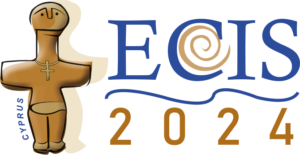Paper Number
1560
Paper Type
Short Paper
Abstract
Vocational trainings play a crucial role in conveying task-related knowledge to incoming workforce. A type of knowledge which is particularly valuable yet challenging and costly to convey is tacit knowledge (TK), i.e., person-bound, non-verbalized knowledge. Augmented Reality (AR) is an innovative technology with the potential to enhance the conveyance of TK in a cost-effective way. By overlaying virtual instructions onto trainees' real-world environment in real time, AR can provide interactive training for TK tasks. To investigate how AR can effectively complement human instructors in conveying TK, we conduct a randomized, controlled field experiment with vocational trainees of a Western-European utility company. We find that TK is most effectively conveyed if AR-based training is implemented as a prequel to human instructor-based training. Our results imply that complementary AR-based training allows organizations to train their workforce effectively and to deploy their valuable human resources more efficiently.
Recommended Citation
Pfaff, Alexander and Spann, Martin, "Man and Machine: AR-Based Vocational Training for Tacit Knowledge Tasks" (2024). ECIS 2024 Proceedings. 6.
https://aisel.aisnet.org/ecis2024/track13_learning_teach/track13_learning_teach/6
Man and Machine: AR-Based Vocational Training for Tacit Knowledge Tasks
Vocational trainings play a crucial role in conveying task-related knowledge to incoming workforce. A type of knowledge which is particularly valuable yet challenging and costly to convey is tacit knowledge (TK), i.e., person-bound, non-verbalized knowledge. Augmented Reality (AR) is an innovative technology with the potential to enhance the conveyance of TK in a cost-effective way. By overlaying virtual instructions onto trainees' real-world environment in real time, AR can provide interactive training for TK tasks. To investigate how AR can effectively complement human instructors in conveying TK, we conduct a randomized, controlled field experiment with vocational trainees of a Western-European utility company. We find that TK is most effectively conveyed if AR-based training is implemented as a prequel to human instructor-based training. Our results imply that complementary AR-based training allows organizations to train their workforce effectively and to deploy their valuable human resources more efficiently.
When commenting on articles, please be friendly, welcoming, respectful and abide by the AIS eLibrary Discussion Thread Code of Conduct posted here.


